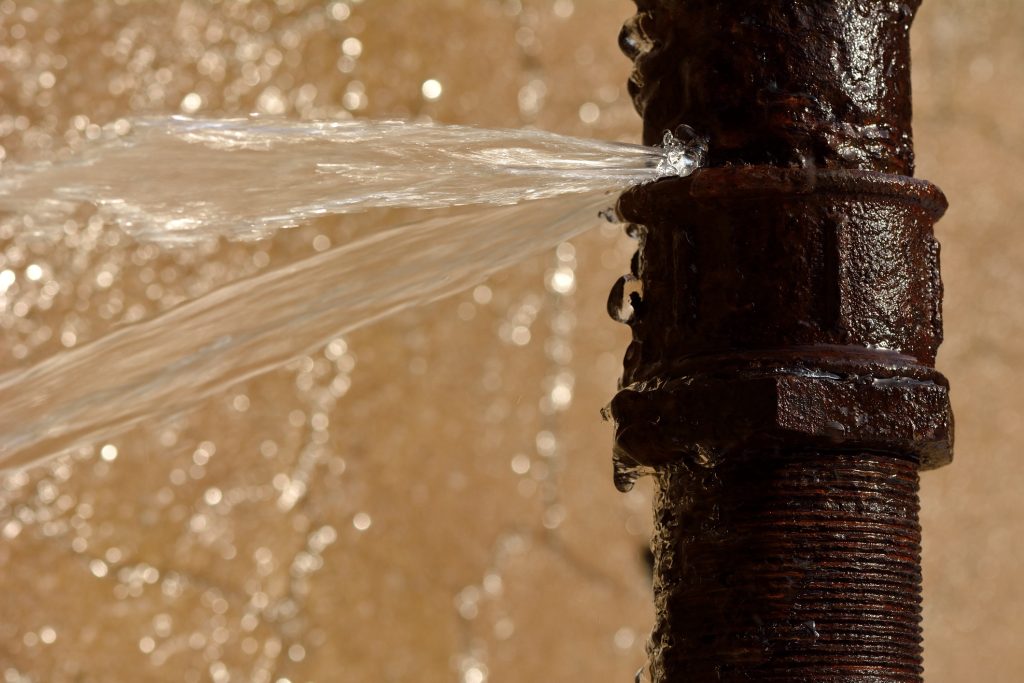Burst pipe incidents are one of the most damaging plumbing emergencies homeowners in Carrollton, TX, can face, especially when temperatures drop unexpectedly. In colder months, even in a typically mild climate like North Texas, sudden freezes can cause water inside pipes to expand and rupture the plumbing system. For homeowners, this can lead to costly repairs, water damage, and disruption to daily life. As spring begins in March, Carrollton often experiences temperature swings that can dip below freezing overnight. These cold snaps pose a risk for homes with exposed or poorly insulated pipes. Understanding how to protect your plumbing is essential for preventing a burst pipe before it turns into a disaster.
This blog post will walk you through six essential steps for protecting your pipes during cold weather. Whether you’re a long-time Texas homeowner or new to the area, being proactive now can save you major headaches later. From insulating your pipes to keeping your home’s temperature stable, each strategy is designed to minimize the risk of freezing and bursting.
At Benjamin Franklin Plumbing of Dallas, we’ve helped countless Carrollton residents safeguard their homes from winter plumbing emergencies. With our expert knowledge of local building styles and seasonal conditions, we’re here to help you stay ahead of any freeze-related issues. Let’s explore how you can prevent a burst pipe this season.
Understand What Causes a Burst Pipe
A burst pipe typically occurs when water inside your plumbing system freezes and expands. This expansion creates pressure inside the pipe, eventually causing it to crack or rupture. Once the ice thaws, water begins to flow through the break, often leading to serious flooding and water damage. It’s a hidden hazard that can quickly become an expensive problem if not addressed early.
In Carrollton, TX, many homes have pipes that run through uninsulated areas like attics, crawl spaces, or exterior walls. These spots are especially vulnerable to temperature fluctuations, even during spring cold fronts. When temperatures unexpectedly drop below freezing in March, exposed plumbing in these areas is at high risk of freezing.
Another factor that contributes to a burst pipe is water stagnation. Pipes that aren’t in regular use, such as outdoor faucets or plumbing in guest bathrooms, can freeze faster. The still water inside these lines offers no buffer against cold air, making them more susceptible to damage during temperature drops.
Understanding these causes is the first step in preventing pipe-related disasters. By identifying where your plumbing is most vulnerable, you can take targeted steps to protect your home. Prevention starts with knowledge, and a little foresight can go a long way when it comes to avoiding costly plumbing repairs.

Insulate Vulnerable Pipes Properly
Preventing a burst pipe starts with insulation, especially in areas that are most exposed to the elements. Pipes located in unheated spaces like attics, crawl spaces, basements, and garages are highly vulnerable during cold snaps. Even in Carrollton’s relatively mild climate, spring temperatures can dip low enough at night to cause freezing conditions.
Professional-grade pipe insulation adds a layer of protection that helps maintain internal pipe temperature. Materials like foam sleeves or fiberglass wraps are often used by licensed plumbers to shield pipes from exposure. Insulating these areas can dramatically reduce the chances of a burst pipe when freezing air hits.
It’s also important to remember that exterior walls housing water lines can become cold quickly, especially in older Carrollton homes with less energy-efficient construction. Pipes running through these walls should be given extra attention, since cold air can seep in through small gaps or cracks.
While insulation won’t guarantee absolute protection, it’s one of the most effective tools plumbers use to reduce the risk of freezing. When combined with other preventative steps, such as keeping indoor temperatures steady, insulation acts as a first line of defense.
If you’re unsure which areas of your home need insulation, consulting a plumbing expert can help. Benjamin Franklin Plumbing of Dallas understands the specific needs of homes in Carrollton and can recommend the right insulation strategy for your layout and plumbing setup.
Keep a Consistent Indoor Temperature
Maintaining a stable indoor temperature is one of the most effective ways to prevent a burst pipe. When the air inside your home stays consistently warm, it helps keep your plumbing system protected from freezing, even in hidden areas like walls, cabinets, or crawl spaces.
Many homeowners in Carrollton, TX, turn down the heat at night or when leaving the house for extended periods. While this might seem like an energy-saving move, it can increase the risk of frozen pipes during sudden cold snaps, which are still common in March. That drop in indoor warmth can leave pipes exposed to freezing air, especially in less-insulated parts of the home.
To reduce the risk, set your thermostat to maintain a minimum of 55°F at all times, even when you’re away. Keeping doors between rooms open also allows warm air to circulate more evenly throughout the house. This consistent airflow can help maintain safer temperatures in areas where pipes are located.
It’s also worth noting that modern smart thermostats can help regulate indoor climate more precisely. They can alert you to drastic temperature drops, giving you time to act before problems arise. For homeowners in Carrollton, this level of control is especially helpful during spring months when weather can shift quickly.
A stable indoor environment is your plumbing’s best friend. By staying consistent with your heating, you’re reducing the chance of a burst pipe and protecting your home from unexpected damage.
Allow Faucets to Drip in Extreme Cold
One of the simplest ways to prevent a burst pipe is to allow your faucets to drip during extreme cold. When temperatures drop, especially overnight, water inside your pipes is more likely to freeze. Letting faucets drip just slightly keeps water moving, which helps reduce pressure buildup and lowers the chance of freezing.
In Carrollton, TX, March can still bring below-freezing temperatures, particularly during early spring cold fronts. These short but sharp drops in temperature can affect pipes that run along exterior walls or through uninsulated spaces. A slow drip during these cold snaps can make a big difference in keeping water flowing.
Focus on faucets connected to exposed or vulnerable pipes, these are the areas where freezing is most likely to occur. Both hot and cold lines should be considered, though most professionals recommend dripping the cold side slightly, as it’s more prone to freezing first.
This small step isn’t just about motion, it’s also about pressure relief. When water freezes and expands inside the pipe, it needs somewhere to go. A dripping faucet provides an escape route that can prevent pressure from building to the point of rupture.
While it may seem counterintuitive to let water run during a freeze, it’s a proven prevention strategy used by plumbers throughout Texas. A steady drip might not seem like much, but it could be the key to avoiding the headaches of a burst pipe later on.
Open Cabinets and Doors to Warm Pipes
Another easy yet effective way to prevent a burst pipe is by opening cabinet doors in key areas of your home. This allows warm air from your living space to circulate around plumbing lines, particularly those under sinks in the kitchen and bathroom. When pipes are located against exterior walls, they’re much more vulnerable to freezing during cold snaps.
In Carrollton, TX, spring can still deliver nights with freezing temperatures, even in March. Homes built with pipes in cabinets or enclosed areas may not get enough heat during these colder nights. Opening those spaces gives pipes a much-needed buffer against the cold.
Keep interior doors open as well to maintain a consistent temperature throughout the house. This promotes better airflow and ensures that heat from your HVAC system reaches more isolated areas. It’s especially important for rooms on the north-facing side of your home, which tend to be colder and less insulated.
While this may seem like a small adjustment, it can be highly effective when used in combination with other preventative steps, such as keeping your thermostat steady and insulating exposed pipes. Together, these strategies provide layered protection against a burst pipe.
Benjamin Franklin Plumbing of Dallas recommends these simple habits as part of a larger cold-weather preparation routine. When it comes to protecting your plumbing, even minor actions can have major impacts, especially when temperatures drop unexpectedly.
Schedule a Plumbing Inspection Before Cold Spells
One of the most proactive steps you can take to avoid a burst pipe is to schedule a plumbing inspection before temperatures drop. A professional plumber can identify vulnerabilities you might not see, such as minor cracks, poorly insulated areas, or outdated pipe materials. Addressing these issues early can save you from expensive repairs and water damage later.
In Carrollton, TX, the weather can shift quickly, especially in March. A sunny day can turn into a freezing night with little warning. Because of these sudden changes, many homeowners don’t realize their pipes are at risk until it’s too late. A seasonal inspection helps ensure that your home’s plumbing is ready for whatever weather comes your way.
During an inspection, a licensed plumber will evaluate your system’s overall condition, check exposed pipes, and recommend any necessary upgrades or reinforcements. This kind of preventive care is especially important for older homes or properties with plumbing that runs through attics, basements, or garages.
Benjamin Franklin Plumbing of Dallas specializes in helping Carrollton residents prepare for seasonal temperature changes. With years of experience and knowledge of local building codes, our team knows what signs to look for and how to protect your system from a burst pipe. Having your plumbing inspected before cold weather hits isn’t just smart, it’s essential.
Professional eyes can spot problems you might overlook. By scheduling an inspection now, you’ll have peace of mind knowing your pipes are secure and your home is protected.
What to Do If You Suspect a Frozen Pipe
Even with all the right precautions, a pipe can still freeze, especially during sudden weather shifts common in Carrollton, TX. Recognizing the signs early is key to avoiding a full-blown burst pipe emergency. If your faucet stops running or you notice frost on exposed lines, there’s a strong chance a pipe has frozen.
The first and most important step is to shut off your main water supply. This helps reduce pressure in the system and prevents additional water from escaping if the pipe bursts. It also limits potential water damage, buying you time until help arrives.
Avoid using open flames or heating devices to thaw the pipe. These methods can damage the plumbing or create fire hazards. Instead, contact a licensed plumber immediately. Professionals have the tools and experience to handle frozen pipes safely and effectively.
Frozen pipes are more than just an inconvenience, they’re a ticking time bomb. When water freezes, it expands and creates internal pressure. Once the ice begins to melt, that pressure can release suddenly, turning a frozen pipe into a ruptured one. Acting quickly can mean the difference between a minor fix and major home plumbing repairs.
Benjamin Franklin Plumbing of Dallas is available to assist Carrollton homeowners dealing with cold-weather plumbing issues. If you think your pipes may be frozen, don’t wait, call a trusted professional to assess the situation and protect your home from serious damage.
Why Burst Pipes Are More Common Than You Think
A burst pipe might seem like a rare event, but it’s actually one of the most common and costly plumbing issues homeowners face, especially in areas like Carrollton, TX, where homes aren’t always built to handle extended periods of freezing weather. Many property owners are caught off guard because they assume milder winters mean their pipes are safe.
However, it’s those sudden, infrequent freezes, like the ones that often hit North Texas in March, that make the risk more deceptive. Homes with pipes in garages, exterior walls, or attics are especially vulnerable during these unexpected temperature dips. In fact, insurance companies report thousands of claims each year due to water damage caused by burst pipes, much of it preventable.
What makes these incidents so common is the lack of preparation. Unlike homes in northern states, many Texas properties lack the insulation or pipe placement strategies designed for freeze protection. As a result, homeowners may not realize their plumbing is at risk until damage has already occurred.
Understanding the scope of the issue helps highlight just how important preventive action can be. From keeping your home warm to scheduling seasonal inspections, the earlier you act, the better protected your home will be. No one wants to wake up to water pouring through a ceiling or flooding a basement.
Benjamin Franklin Plumbing of Dallas is committed to helping Carrollton homeowners stay informed and prepared. A burst pipe isn’t just a winter problem, it’s a year-round concern in climates with unpredictable weather.
Local Weather Watch, Carrollton’s Freeze Forecast in March
March in Carrollton, TX may feel like spring is just around the corner, but freezing temperatures are still a real possibility. It’s not uncommon for overnight lows to dip below freezing, especially during late-season cold fronts. These quick changes in weather catch many homeowners off guard, making this one of the riskiest months for a burst pipe.
The biggest challenge during March is unpredictability. One day might be sunny and mild, while the next brings a freeze warning. This back-and-forth pattern is tough on your home’s plumbing, particularly if pipes are located in unheated or poorly insulated areas. That’s why it’s essential to stay updated on the local weather forecast.
The National Weather Service and local news outlets often issue freeze watches or warnings in advance. Setting up alerts on your phone or checking forecasts from trusted sources like NOAA.gov can help you prepare. When a freeze is on the horizon, you’ll know it’s time to take preventive steps, such as dripping faucets, opening cabinets, and keeping your thermostat steady.

FAQs About Burst Pipes
1. What temperature causes burst pipes?
Pipes can begin freezing when temperatures hit 32°F, but the risk of a burst pipe increases significantly when temps drop below 20°F. Even short periods of cold weather can create enough pressure to rupture pipes, especially if they’re uninsulated.
2. How can I tell if my pipes are frozen?
If water flow slows to a trickle or stops entirely, it’s a strong sign your pipes may be frozen. You might also notice frost on exposed pipes or hear unusual banging sounds as ice blocks water flow.
3. Should I drip hot or cold water during a freeze?
You should drip the cold side of the faucet, especially for pipes located in exterior walls or unheated spaces. In some cases, dripping both sides can help maintain movement in the system, but the cold line is more commonly affected by freezing.
4. Is pipe insulation enough to prevent freezing?
Insulation is a great first defense, but it should be combined with other steps like maintaining a steady indoor temperature and allowing airflow around vulnerable plumbing. No single method is foolproof, layered prevention works best.
5. When should I call a professional plumber?
Call a plumber if you suspect a frozen pipe, notice signs of water damage, or haven’t had your plumbing inspected before a cold front moves in. Acting quickly can help you avoid a burst pipe and the extensive damage it can cause. If you’re already dealing with reduced water flow, strange noises, or visible frost on your plumbing, these may be early warnings of a potential burst pipe.





